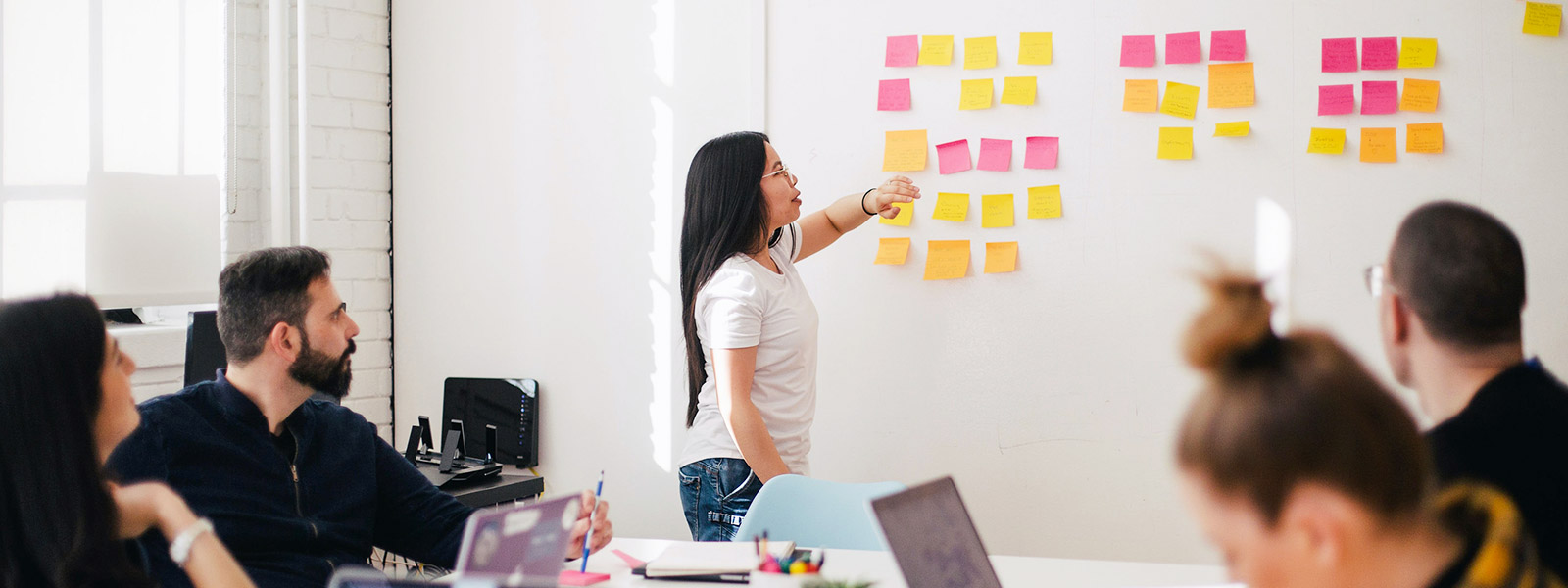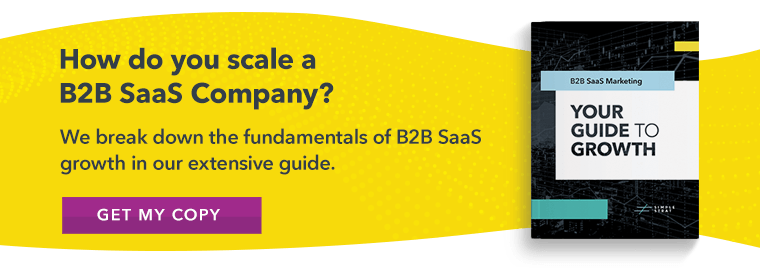Embarking on the journey to develop a content marketing strategy can be daunting. A well-built content funnel is a powerful tool for establishing thought leadership and generating leads, but a quick glance at many content marketing how-tos can be an overwhelming experience.
There are seemingly thousands of (sometimes conflicting) best practices, frameworks, infographics, theories, and case studies. But while most of them nail the theory behind why content funnels work, they fail to answer the question, “What should I do right now to give me the best chance of generating revenue from my efforts?
So this article’s sole focus is to answer that exact question. First though, let's make sure we're on the same page about what a content funnel is.
What is a content funnel?
A content funnel is a strategic method of structuring and delivering content, customized to meet the consumer's needs at every stage of their buying journey, and help nudge them toward the next stage. A content funnel helps marketers convert website visitors into customers over time.
This has a lot of overlap with an inbound marketing funnel, which is a broader model that focuses on a wider scope of marketing techniques. A content funnel is more focused on the creation and distribution of content to visitors at the appropriate moments.
You wouldn't pitch a product demo to someone who hasn't displayed interest your product, and you wouldn't send a podcast episode to a lead who needs help deciding who to buy from. That's why the content funnel matters.
A content funnel helps you provide visitors the right information at the right time — moving a visitor from curiosity to interest, then to a decision, ensuring a smoother, more personalized buying experience.
A content funnel is generally split into stages, where each targets visitors with different content types based on their behavior and interest levels.
The content funnel stages
Did you know most customers average seven interactions with your content before they ever make a purchase?
Using what you know about your target audience to deliver unique and valuable information is a powerful way to influence and enhance that experience. In fact, having the right content in the right place at the right time can be one of the biggest differentiators for your brand as a prospective customer gets to know you better.
That’s why it’s so important to have a well-planned content funnel. But before we start talking about building one, let’s take a minute to understand the purpose of each stage in that funnel.
What are the stages of a content funnel?
The stages of the content funnel include the top of the funnel (TOFU), middle of the funnel (MOFU), and bottom of the funnel (BOFU). We like to add one for "below the funnel" as well.
- TOFU content introduces new prospects to your company with valuable information that helps them solve problems or meet goals related to your product, like an educational blog post or podcast.
- MOFU content generates leads and nurtures them using content that clearly establishes your brand as an expert and begins to show people how your product(s) can help them. Think case studies and webinars.
- BOFU content supports lead conversion to paying customers with product-focused information that clearly establishes your product(s) as the best choice for your ideal customers. That means things like product comparisons, customer stories, and testimonials.
- Content below the funnel helps you delight your current customers, helping to prevent churn and generate growth through upgrades and referrals. This could be anything from email courses to how-to articles.

In the examples in the graphic above, you can see the very specific kinds of content that work for each stage. There are many approaches and strategies devised to help you decide which kind of content will perform best and help you reach your goals.
The key to great content is to do your research. Make sure what you write is customer-centric and solution-based, answering your customers questions and solving their biggest challenges. If you can do that, you’ve laid the foundation for a frictionless content funnel experience.

When should you begin building your content funnel?
It’s really never too early to begin thinking about how a content strategy can drive your business. There are, however, specific events in your company’s evolution that can indicate you might be ready to invest in content:
- You have a strong product/market fit and understand your target audience
- You need to scale your sales to reach your growth goals
- You’ve outgrown your current growth strategy
Deciding to stop relying solely on early growth levers like customer referrals, word of mouth, and outbound sales is an important move in the growth of many companies. Recognizing that a content marketing program can support these growth channels in addition to becoming one of its own is the first step.
But remember, when it comes to content marketing, patience is a virtue. A successful program can take some time to deliver results and will require a relatively significant investment of time and resources. We tell you how to tackle it with an incremental approach in the next section.
What part of the content funnel you should build first?
Once you decide it’s time to implement a content marketing strategy, the first question is often “Where do I even begin?”
Many marketing professionals might recommend starting at the top with TOFU content. That’s generally the place where you can drive some big traffic numbers that make your program look like an early success. But businesses don’t run on traffic, they run on revenue.
That’s why we recommend starting at the bottom instead.
Content like competitive comparisons and customer testimonials will not only help you begin to lay a foundation for your content funnel, it’ll also help your sales team build trust and close deals. This will help to ensure your content is working to generate revenue from day one, even before your content funnel is full.
To get started, choose one or two key pieces to build. If you are uncertain what might be most valuable, ask. Talk to your customers and your sales team. Figure out what gets your customers to buy and what holds them up in the sales process, then try to create content for those areas.

For example, if customers are often comparing your product to a competitor’s, a product comparison guide may be a good first step. Or, if prospective customers’ IT teams are frequently delaying the purchase with questions about specifications and implementation, a product data sheet might be helpful.
You’ll likely find that one or two pieces will have your sales team thanking you, as long as the content is well-made and based on real opportunities you discovered in that research discussed above.
Pro Tip: Ensure your sales team is included in this process from the beginning. This will be critical in getting them to use the content you create and to establishing the feedback loop you need to continuously create great content.
How do you build out a content funnel?
Once you have a couple of valuable BOFU content assets in place, it’s time to begin moving up the funnel.
Work on creating a couple of pieces for the middle of the funnel next. Most of the time, this content will also be able to serve double duty for your sales team just like the BOFU content. A great salesperson can always put a good case study or research report to good use in their outreach.
MOFU content is also better suited to generate some leads of its own, so you can start to track some success directly back to your content marketing efforts.
As you probably guessed, the next step is beginning to build out some high-quality TOFU content. This might feel like the wild west after spending time with the much-more-focused stages lower in the funnel.
Be sure that your first pieces at the top of the funnel are closely related to the value your company provides and are well aligned with the pieces you’ve already created. Ask yourself, “If someone reads this, are they also likely to be interested in the MOFU content we’ve already created?”
Do I need specific tools to build my content funnel?
While it's entirely possible to manage a content funnel using disparate tools, a unified platform like HubSpot can greatly simplify this process.
HubSpot combines a range of functions such as content management, email marketing, SEO, social media scheduling, CRM, and automates various processes to streamline content marketing funnels. It also allows for personalized content delivery based on audience insights, offering robust analytics tools for optimizing your strategies.
Building a well-oiled content machine
So what about that ‘below the funnel’ stage? Most companies will have already created some content here, they just may not have called it content marketing. Indeed, many organizations will delegate this content to a support team or product marketing team rather than the content marketing team. Regardless of how your company handles it, your content marketers should at least be aware of what’s happening below the funnel.
Whenever there’s an opportunity to create content that will help or delight a current customers, it should be created. Then work to see if that content can also be repurposed for other stages in the funnel as well.
Marketers without the staff required to implement this on their own may also turn to third party expertise in the form of content partnerships, where you don't need to worry about the common pitfalls associated with building out a content funnel.
Similarly, if the issue is more a matter of bandwidth, many marketers extend their team's capabilities with content repurposing services, allowing them to multiply their content output, so your expertise can go much farther.
Creating a content funnel that gives people a best-in-class experience with your brand at every stage should be approached methodically. Beginning at the bottom ensures you have the content you need to close leads. Once that foundation is built, moving up the funnel will enable you to drive the new traffic and leads that are critical to growth.



